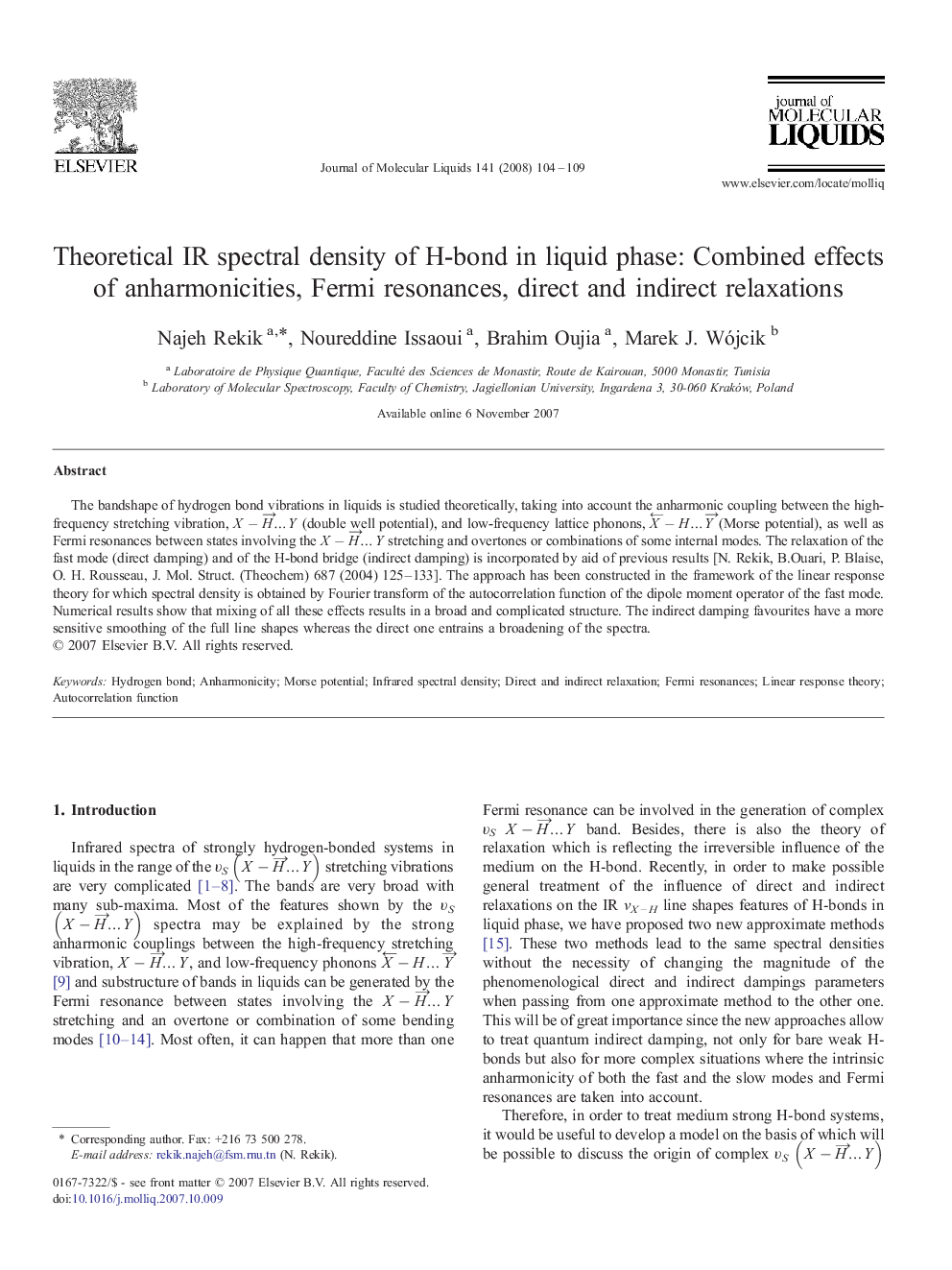| Article ID | Journal | Published Year | Pages | File Type |
|---|---|---|---|---|
| 5413153 | Journal of Molecular Liquids | 2008 | 6 Pages |
Abstract
The bandshape of hydrogen bond vibrations in liquids is studied theoretically, taking into account the anharmonic coupling between the high-frequency stretching vibration, XâHââ¦Y (double well potential), and low-frequency lattice phonons, XââHâ¦Yâ (Morse potential), as well as Fermi resonances between states involving the XâHââ¦Y stretching and overtones or combinations of some internal modes. The relaxation of the fast mode (direct damping) and of the H-bond bridge (indirect damping) is incorporated by aid of previous results [N. Rekik, B.Ouari, P. Blaise, O. H. Rousseau, J. Mol. Struct. (Theochem) 687 (2004) 125-133]. The approach has been constructed in the framework of the linear response theory for which spectral density is obtained by Fourier transform of the autocorrelation function of the dipole moment operator of the fast mode. Numerical results show that mixing of all these effects results in a broad and complicated structure. The indirect damping favourites have a more sensitive smoothing of the full line shapes whereas the direct one entrains a broadening of the spectra.
Keywords
Related Topics
Physical Sciences and Engineering
Chemistry
Physical and Theoretical Chemistry
Authors
Najeh Rekik, Noureddine Issaoui, Brahim Oujia, Marek J. Wójcik,
